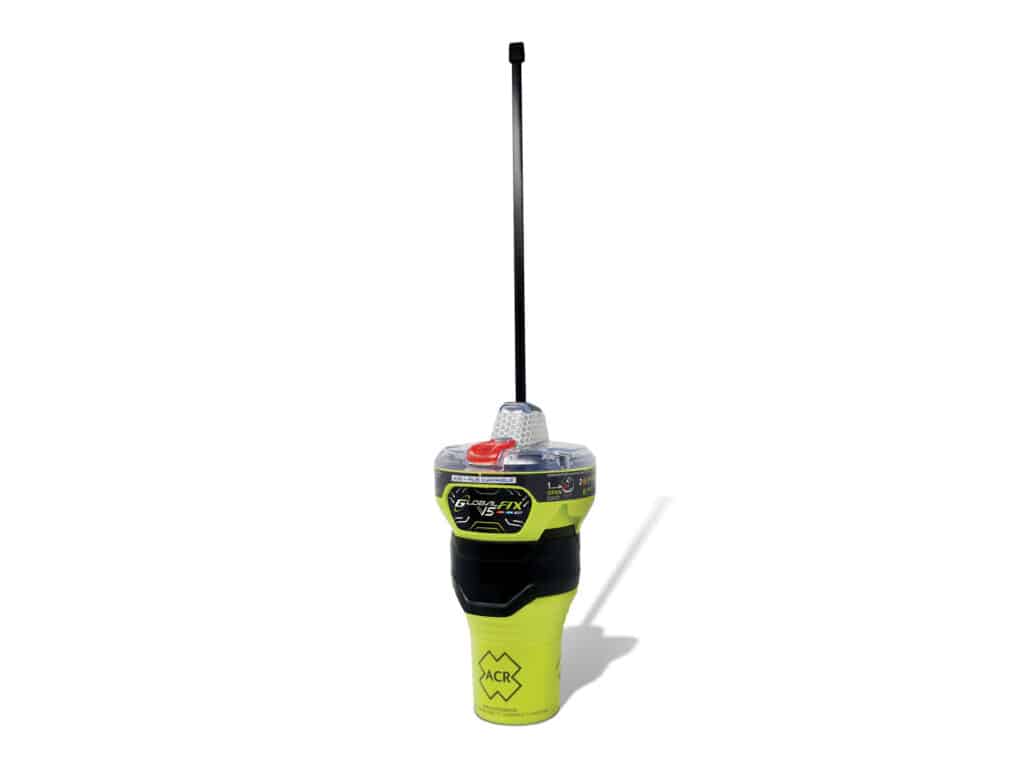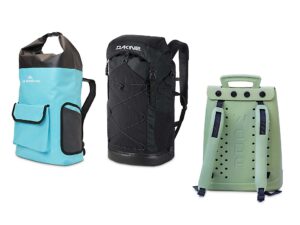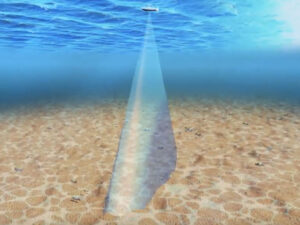
Emergency position-indicating radio beacons (EPIRBs) have saved the lives of countless mariners by helping rescuers find vessels and souls in distress. Now a new generation of EPIRBs with integrated AIS allows first responders and others to home in even faster and with greater accuracy.
ACR Electronics has introduced the GlobalFix V5 AIS EPIRB series. This is the first time that EPIRBs have incorporated AIS (automatic identification system) transmitters, and that’s important because AIS adds a precise location means for rescuers approaching the emergency zone. It also alerts other mariners within AIS range, making it possible for them to lend assistance.
To back up for a minute, here’s how an EPIRB works and why adding AIS makes one even better. Once activated by a boater, an EPIRB uploads a distress signal on a frequency of 406 MHz to a satellite with the beacon’s unique NOAA registration number, a description of the boat and the name of its owner. It also uploads its GPS position. This information is immediately sent to the nearest rescue agency to dispatch assistance, such as the Coast Guard.
To confirm someone received the satellite distress signal, some ACR EPIRBs, including the V5 AIS series, have a Return Link Service feature, which illuminates a blue light on top of the V5 beacon to assure boaters that the distress message was received and the location detected. That can mean a lot to survivors clinging to hope that help is on the way.
A search and rescue team underway uses a second 121.5 MHz homing signal transmitted by the EPIRB that gets them to within 1 mile of the location. The EPIRB also transmits GPS data that gets them even closer, within 110 yards. But in stormy seas streaked with foam and festooned with whitecaps, locating survivors on such a scale can still pose a challenge.
That’s where AIS comes in. It can locate the beacon to within a 33-foot circle, identifying it as a highlighted man overboard (MOB) on a chart plotter or commercial-grade electronic chart display and information system (ECDIS), allowing rescuers to quickly zero in. It does the same on chart plotters of nearby vessels, enabling them to also lend assistance, perhaps even before a search and rescue agency arrives on the scene.
The new EPIRBs also feature new NFC (near field communication) technology that works with the free ACR mobile app, allowing boaters to monitor their beacons, review self-test results, view GNSS test locations, and monitor beacon performance and maintenance, including the built-in battery. There’s also an infrared strobe and a visible light to facilitate rescue in poor visibility or at night.
The V5 unit is available with a Category I float-free bracket ($929.95), offering full IMO regulatory compliance for SOLAS vessels, or with a Category II manual-release bracket ($799.95). To learn more, visit acrartex.com.
- A. Beacon Activated: A 406 MHz distress message, including GPS coordinates, is sent to a worldwide emergency satellite network. The AIS alert is also transmitted locally to all nearby vessels for immediate rescue.
- B. Distress Message Relayed: A 406 MHz message and GPS coordinates are relayed to the closest local search and rescue organization.
- C. Return Link Service: Unique to ACR, Return Link Service provides confirmation to the boater in distress that the message has been received and the location detected.
- D. Search and Rescue Dispatched: A 121.5 MHz homing signal and GPS coordinates lead rescuers to the general area, while AIS helps pinpoint the location.









